5 Evergreen Tips To Improve Your Marketing Campaign Performance

Reviewing your digital marketing campaign performance and thinking about how you can improve? With digital marketing, you have the data and tools to measure marketing campaign metrics, set conversion goals, and optimize your campaigns for better performance, all in real-time.
We’ll share with you five evergreen tips to systematically review and improve each aspect of your marketing campaign in this guide.
Let’s get started!
- What is campaign performance?
- How can you improve your campaign performance?
- - Review your audience targeting criteria
- - Choose the right channel for your ad campaign
- - Improve the copy, titles, thumbnails & visuals of your campaign touchpoints
- - Set up A/B testing to refine your campaign optimization process
- -Measure your campaign performance metrics and track your success with reporting tools like DashThis
- How to create your first dashboard with DashThis
- Conclusion
What is campaign performance?
Campaign performance metrics track how a digital marketing campaign is doing against its assigned goal. First, determine the campaign’s goal, then outline which marketing metrics are suitable.
Identifying critical key performance indicators (KPIs) based on your campaign goals:
Goal & Metrics:
- Generate marketing qualified leads for the sales team with our latest thought leadership industry report: Landing page conversion rates on a lead magnet from a business email address relevant to our target customer’s industry
- Which ad copy and creative is the most engaging for a set of targeted search queries? : Clickthrough rate (CTR), Number of clicks
- Is our campaign providing sufficient return on investment for the marketing budget we’re spending? : Cost per click (CPC), Total number of sales qualified leads, Cost per lead, Total ad spend
With your campaign information in place, you can identify best performing creatives, optimize marketing budgets and have complete visibility on how your campaign is doing.
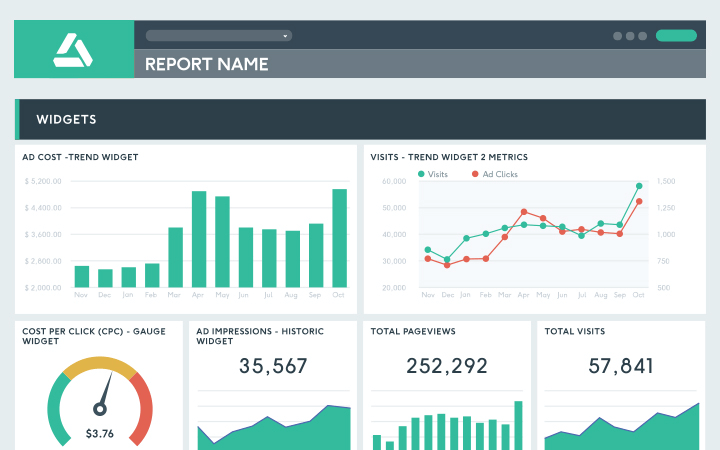
Get this dashboard with your own data!
How can you improve your campaign performance?
You’ve seen how to define marketing campaign goals and use metrics to track your progress against these goals
Now, let’s go into how to review and improve campaign performance.
1. Review your audience targeting criteria
A successful marketing campaign and marketing strategy starts with a clear definition of their target audience, then tailoring your ads to speak to them directly.
If an ad campaign is underperforming, take the time to review your campaign’s creatives and positioning if they’re still appropriate for your target audience.
Target audiences also evolve. Periodically review your buyer personas and audience characteristics to see if your personas are still accurate.
Five questions to ensure you’re targeting the right audience for your ad campaign.
- What does your typical buyer demographics look like?
- What are their goals and interests?
- What are their challenges or pain points?
- What concerns or questions do they have about any proposed solution?
- Where are they in their buyer’s journey?
Other actionable methods to gather information on new or potential customers:
- Speak with existing customers or your sales team for insights
- Create a quick email survey for current customers
- Search on forums like Reddit, industry forums where your target audience frequents
- Look at your competitor’s target keywords for inspiration.
Once you have this information in place, review your ad targeting criteria, copy and creatives throughout your entire campaign, including:
2. Choose the right channel for your ad campaign
Once you’ve narrowed down your target audience, review the channels for your campaign if they’re appropriate for your campaign objectives and meet the needs of your target buyer.
Digital marketing ad placement channels usually fall into four categories:
- Search ads
- Display ads
- Ads on search partners
- Social media ads
Let’s go through the pros and cons of each channel!
Search ads:
Search ads appear along with search results when a keyword or phrase is entered into a search engine.

- Pros: Since specific keywords trigger search ads, you have a higher chance of converting high-quality leads for your campaign as it puts your ad in front of people who are actively looking for your offer.
- Cons: Search ads are simple, text-based ads, making them harder to stand out against people bidding on similar search terms. Furthermore, ad cost-per-click also tends to be expensive due to higher competition.
Display ads
These visual ads appear on web pages across the Internet associated with your target audience segment.

- Pros: Display ads are optimized for visibility. For example, if you run your display ad campaign with the Google Display Network (which serves 2 trillion ad impressions per month across two million+ websites), your ad gets pushed to websites, mobile apps and video content, allowing you to reach a significantly larger audience than search ads. You can also use a mix of images and visuals to help your ad stand out.
- Cons: Display ads are also prevalent across the internet, making some associate display ads with spam. The popularity of ad blockers (42.7% of Internet users worldwide report using an ad blocker), means you risk wasting ad budget.
Ads on search partners
This option extends your ad campaign to other web properties that Google owns, like YouTube and other websites selling ad placements listed as Google Partners.
- Pros: Extends your ad reach to places beyond Google search results, allowing you to reach audiences your competitors may not be in. You’ll also get platforms with their massive reaches like Amazon and YouTube
- Cons: What you gain in reach, you give up in control. There’s limited data on where exactly your ads will show. Google doesn’t publish a list of Google Search Partners, and you can’t control which partner you want to show on.
Social media ads
Social media sites like Facebook, Twitter, LinkedIn, TikTok and Reddit have a dedicated ad platform. They specialize in reaching their intended audience effectively, making social media ads a fantastic compliment to search network ads.
- Pros: Easy to use and segment, especially if you know your target audience frequents a particular social media platform. Complement your organic social strategy with paid ads, especially if you see a piece of content that already resonates with your audience.
- Cons: Social media platforms are interactive by nature. Viewers can comment on your content, creating a double-edged sword. While positive feedback can boost your campaign, be ready for negative feedback and have a response plan in place once you start running social media ads.
3. Improve the copy, titles, thumbnails & visuals of your campaign touchpoints
Now we turn to the actual content in your online advertising campaigns.
You want to look at your customer journey when they interact with your campaign, analyze the performance of each touchpoint and identify areas for improvement.
Next, use insights from your audience targeting criteria and buyer persona documents to optimize campaign touchpoints.
For example, a typical customer journey for a PPC campaign could look like this.
- They search a keyword phrase, find your ad and click
- The PPC ad directs them to a landing page, which reinforces the positioning of your product as their preferred solution
- Visuals accompany your potential customer each step of the way, dispelling objections and answering questions.
- They fill in a form to indicate their interest
Review any of these touchpoints and their associated performance metrics to identify drop-off points.
For example, if you have a low view to conversion ratio on your landing page, you could review your landing page for any conversion rate optimization opportunities, including headlines, copy placements, visuals or any website heat maps to identify any blockers.
You might be wondering: “But how do I know if my changes result in improved campaign performance?”
This brings us to our next tip…
4. Set up A/B testing to refine your campaign optimization process
A/B testing is the act of showing two variants of a campaign asset to site visitors at random.
Once we’ve obtained enough campaign data, we analyze the data to see which variant performs better for any conversion goal or campaign objective.
Use A/B testing to test and refine your campaign performance systematically. A/B testing enables you to implement tried-and-tested changes in your campaign with complete confidence.
An example 3-step process to optimize a campaign landing page with A/B testing
- Step 1: Create a new version of your landing page with a different headline
- Step 2: Allocate the traffic split between the control and test variant (let’s use 50/50 as an example), where 50% of your traffic sees the original variant and 50% considers the version with a different headline.
- Step 3: Gather data overtime on your key metrics to see if your change had the desired effect.
Pro tip: Testing one change at a time helps you pinpoint which change had the desired effect. Apply this process to each campaign touchpoint to make your marketing campaign more effective over time.
5. Measure your campaign performance metrics and track your success with reporting tools like DashThis
There’s another aspect you’ll need to bear in mind while optimizing your campaign: performance reporting.
For example, you may need to use reports to justify your decisions to change an underperforming landing page. Tap on tools like DashThis to streamline your reporting to your marketing team, clients or internal stakeholders. Use visuals like pie charts and trend graphs to make your ideas easier to digest where relevant.
More on preparing a robust digital marketing performance report your clients, stakeholders and team members love here.
How to create your first dashboard with DashThis
This section will teach you how to measure campaign performance in a visually appealing, easily digestible manner using DashThis's dashboard and analytics tools.
After signing up for an account (your first 15 days are on us!), it’s time to create your first dashboard.
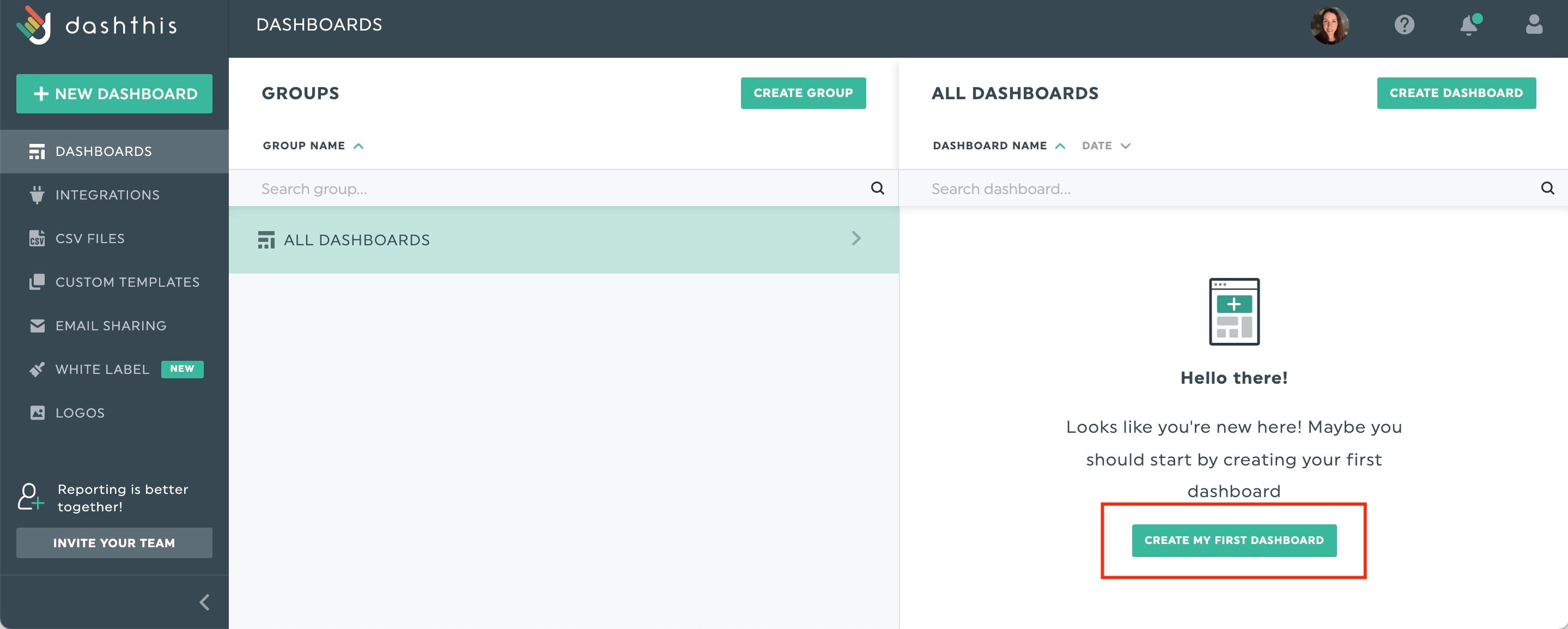
- From the DashThis interface, click on Create My First Dashboard
- Start with a blank dashboard or choose from 40+ templates to quickly get started
- Select your dashboard’s preferences, including name, language, currency and time.
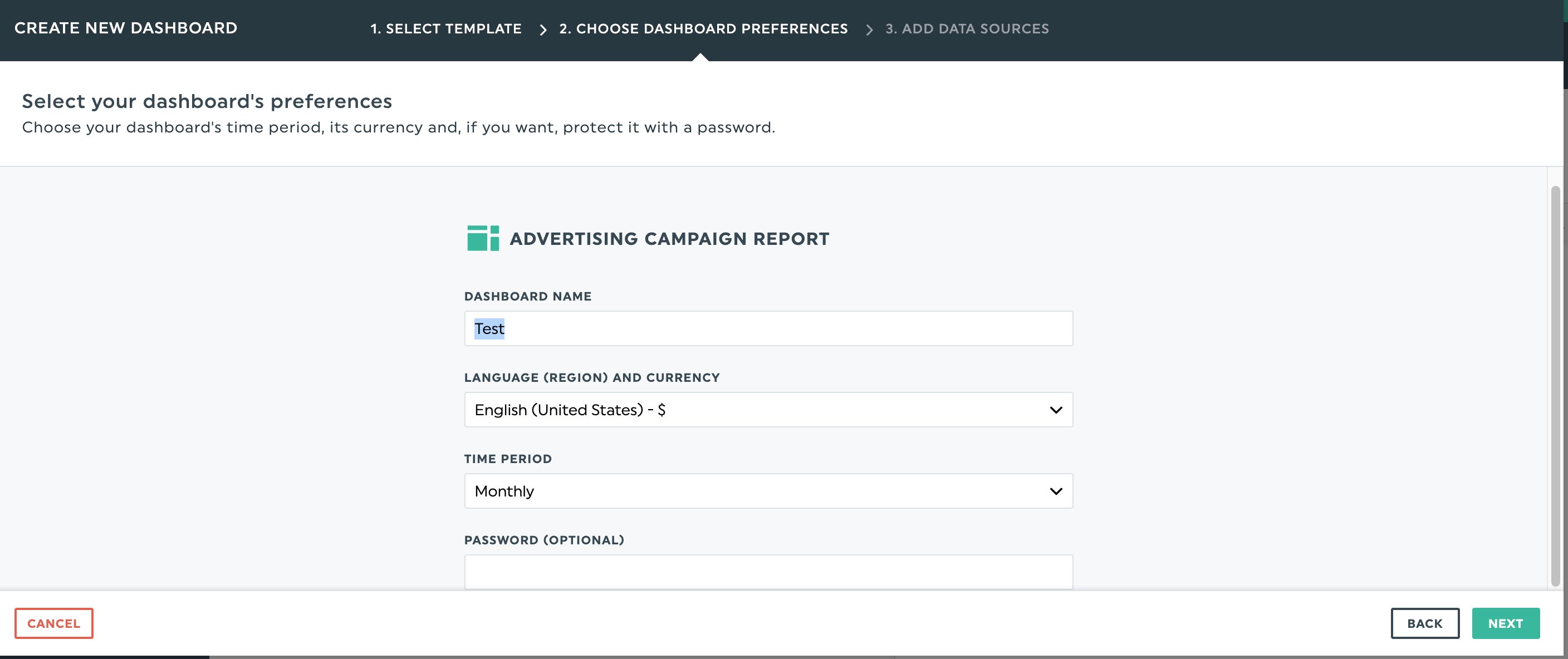
- Connect your data sources (we support 34+ native integrations with popular marketing platforms).
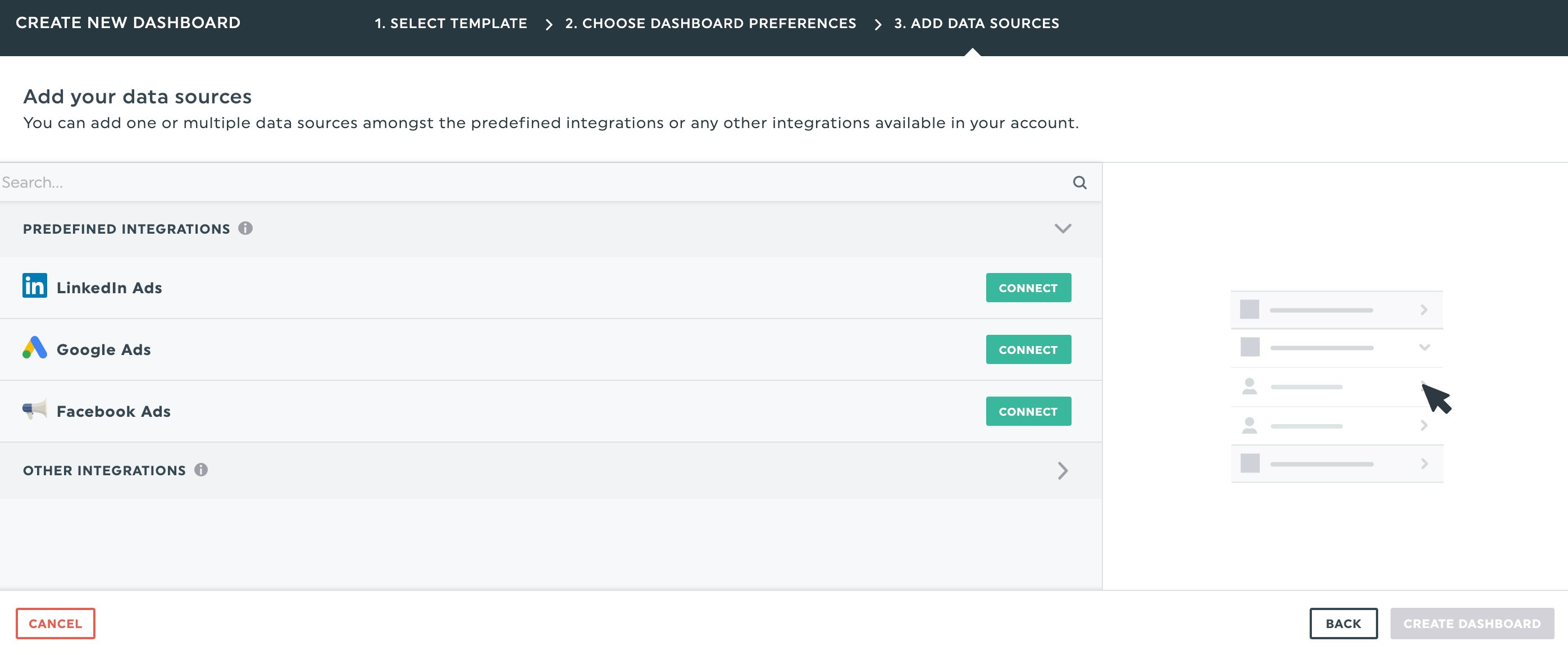
Congratulations! You’ve created your first dashboard with DashThis.
Creating reports in a few clicks is just the start. DashThis also allows you to customize the data you display in a report depending on who you’re presenting to.
For example, stick to high-level numbers and overall performance by channel if you’re presenting to senior management.

Grab this campaign performance report with your data!
If you’re presenting to people more familiar with operations or marketing analytics platforms like Google Analytics, showcase campaign performance breakdown by advertising channel for a more detailed look at the numbers.
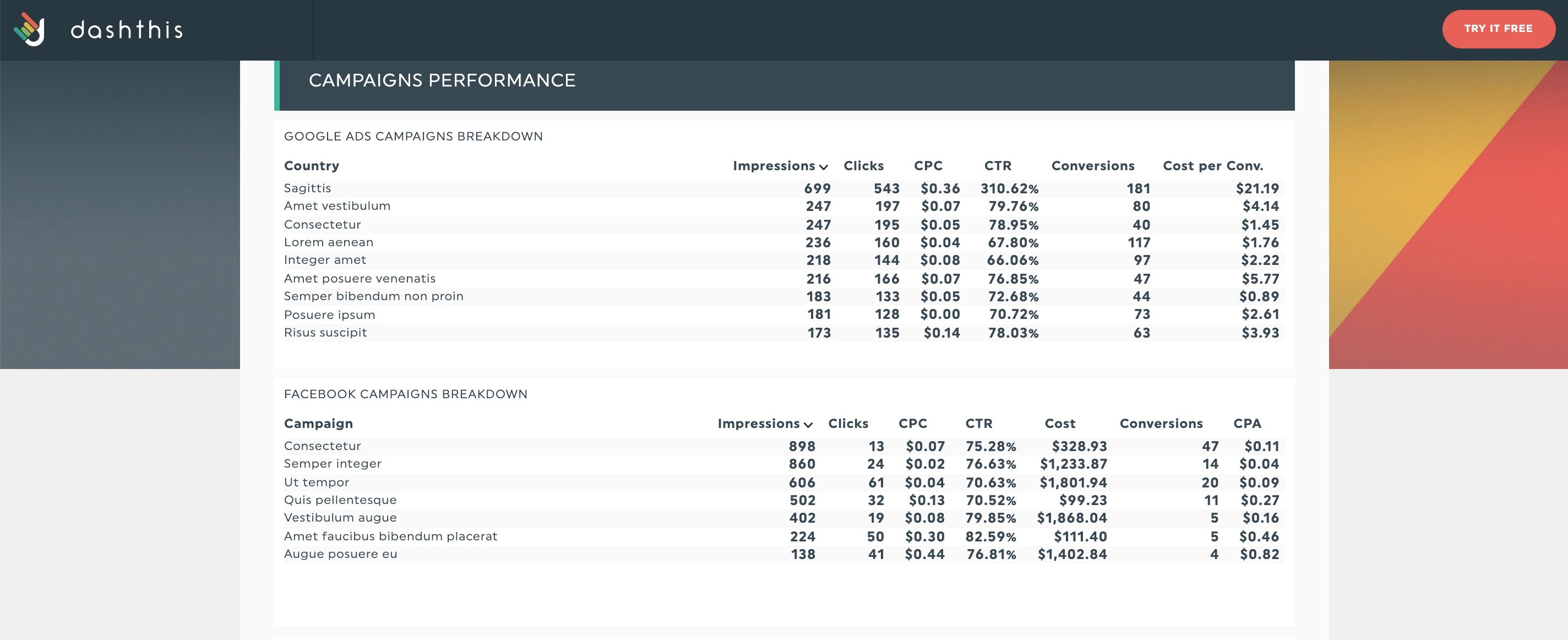
Grab this campaign performance report with your data!
DashThis also automates your reports and updates themselves with new data, saving you valuable time compiling data or ensuring reports are up to date.
Track and improve your marketing campaign performance in seconds with DashThis
By following this guide, you’re now armed with a systematic approach to analyzing and optimizing your marketing campaign’s performance.
No more wandering in the dark not knowing which aspects of your marketing campaign to improve. You can now approach the campaign optimization process calmly and with confidence.
Track the results of your changes and present your findings accurately with DashThis.
Get started with a 15-day free trial today!
Ready to improve your campaign performance?
Read More
Don’t miss out!
Automate your reports!
Bring all your marketing data into one automated report.
Try dashthis for free

